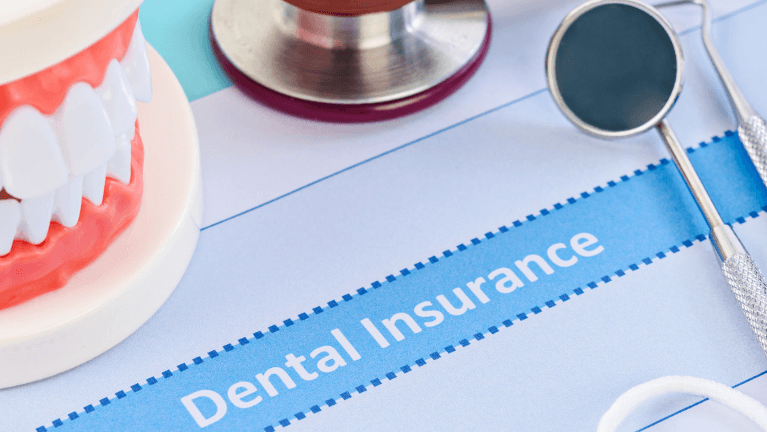
Having dental insurance is unavoidable, but insurers’ terms can sometimes feel overwhelmingly complicated. Words like deductible, co-payment, and co-insurance can be complex, but it is vital to understand them to enjoy the full benefits of your medical insurance.
What is a Deductible?
A deductible is the fixed annual amount you must pay out-of-pocket for medical procedures before your insurance starts paying its share of medical expenses. Depending on your plan, certain diagnostic and preventative services like dental x-rays, cleanings, and checkups will be covered in full, even if you haven’t reached your deductible.
Your out-of-pocket expenses may only apply to procedures like fillings, extractions, root canals, etc. Your deductible is in addition to your monthly insurance premium, which keeps your plan active. You will continue paying your premium after reaching your deductible, but your expenses will be covered by the insurance up to the percentage of your coinsurance.
It’s important to remember that you may have separate deductible amounts for different services that fall under the same insurance plan. For example, suppose your dental deductible is $100. In that case, that amount may not apply to other medical services, so if your dental deductible has been paid in full, you may still have a remaining deductible for mental health services.
What is Coinsurance?
Coinsurance is the percentage of covered medical expenses you share with your insurance provider after you reach your deductible amount. For example, if you go to the dentist for a filling that costs $100 and your coinsurance rate is 20%, you will pay $20 while your insurance covers the other $80.
Coinsurance is a form of cost-sharing that ensures you will not have to shoulder the burden of a large dentistry bill alone. This sharing can benefit expensive procedures like extractions, root canals, and implants.
Your coinsurance percentage will vary depending on the service you pay for, so it’s vital to know your responsibility before an appointment. Coinsurance only applies to services covered in your plan, so you will still be required to pay the total bill for other services your insurance does not cover.
The services covered vary by provider and plan. Plans with higher premiums usually pay more services and offer a lower coinsurance percentage, meaning you pay less per appointment but more per monthly premium.
What is a Co-Payment?
Co-payments are fixed fees that you will pay for services specified by your medical insurance plan. Co-payments apply once you have reached your deductible but don’t apply to every covered service. They are usually reserved for general practitioner visits, prescriptions, and, for some plans, emergency care.
For example, if your prescription co-payment is $30 and your dentist prescribes a $30 medication, you will cover the entire amount. However, if your dentist prescribes a $300 medication, you will only pay your $30 co-payment.
This fixed fee can be beneficial if you have chronic conditions that require expensive medications every month. However, most insurance providers don’t cover all medications, so speak to your dentist about prescribing covered medicines, so you won’t have to bear the total cost.
The services that require a co-payment are specific to your plan and provider, so be sure to understand when you’ll need to make a co-payment before choosing an insurance plan. Your co-pay rate will usually be printed on your medical insurance ID card and remain fixed unless specific changes are made to your plan.
Variables That May Affect Your Required Payment
Most insurance plans have a network of healthcare providers with which they work. Depending on your insurance provider, your co-payment might be 20% for in-network dentists and 50% for out-of-network dentists.
For example, if your dental bill is $100 and they are in-network, you will be required to pay $20, and your insurance will pay $80, but if your dentist is not in-network, you will need to pay $50. These rates depend on your plan and provider, so you must always ensure that a dentist is in your network before making an appointment.
Dentists in your insurance provider’s network have special rates for members of your insurance plan, making it much more affordable to stay in-network. Out-of-network providers do not have any agreements with your plan, which means they will generally be much more expensive, and your co-payment will be higher.
Unfortunately, dentists are in-network, so they won’t necessarily be close to your home. If you have specific dental providers you prefer, confirm they are in-network before choosing an insurance plan or be prepared for higher co-payments when visiting that provider.
Another variable that can affect your co-payment and co-insurance amounts is whether the appointment is for yourself or a dependent on your family plan. Depending on factors like age, different members on the same plan may have different deductibles, co-payments, and co-insurance rates.
It’s vital to be fully aware of each member’s rate in your plan to prevent unexpected expenses.
Understand Your Payments to Save Money on Dental Procedures
Becoming familiar with the critical phrasing in your dental insurance plan, deductibles, co-insurance, and co-payments is essential for making informed decisions regarding your dental care and managing your healthcare costs.
Familiarize yourself with these terms to plan your out-of-pocket expenses, choose network dentists, and fully take advantage of your insurance. Remember to review your plan carefully, and don’t hesitate to ask for clarification. Being an informed patient saves you money and ensures that you get the dental care you need when you need it.